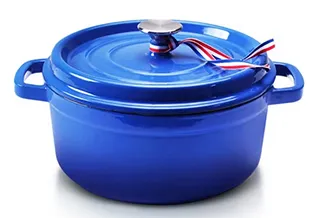
small cast iron skillet for eggs
The Joy of Cooking Eggs in a Small Cast Iron Skillet
Cooking eggs may seem like a simple task, but with the right tools, it can turn into a delightful culinary experience. Among the array of cookware available, a small cast iron skillet emerges as one of the best choices for preparing eggs. This sturdy and versatile kitchen companion enhances the cooking process in ways that elevate the ordinary to the extraordinary.
The Benefits of a Small Cast Iron Skillet
A small cast iron skillet, often measuring around 6 to 8 inches, is the perfect size for cooking eggs. The benefits of using cast iron are backed by both scientific and experiential evidence. One of the standout features of cast iron is its excellent heat retention. When you heat a cast iron skillet, it retains that heat far better than many other materials. This ensures even cooking and prevents hot spots, which is especially important for eggs that can easily overcook or develop an unappealing texture.
Additionally, as cast iron skillets are seasoned, they develop a naturally non-stick surface. This is a major advantage when cooking eggs, whether you’re scrambling, frying, or making an omelette. A well-seasoned skillet allows the eggs to slide off effortlessly, making for easier cooking and cleanup.
Perfecting Your Egg Dish
Cooking eggs in a small cast iron skillet opens up a world of possibilities. From fluffy scrambled eggs to perfectly cooked sunny-side-ups, the skillet will serve you well. Here are a few ideas to get you started
small cast iron skillet for eggs

1. Scrambled Eggs Start by heating your small cast iron skillet over medium heat and adding a bit of butter or oil. Beat your eggs in a separate bowl and season with salt and pepper. Once the skillet is hot, pour in the eggs. Stir gently, allowing the cooked edges to fold inwards toward the center. Remove from heat when they still look slightly undercooked, as they will continue to cook from residual heat.
2. Vegetable Omelette For a healthy twist, add some spinach, tomatoes, or bell peppers before pouring in your beaten eggs. Cook on low to medium heat, and carefully lift the edges with a spatula to let the uncooked egg flow beneath. Once the bottom is firm, fold the omelette over and cook for another minute to ensure the inside is set.
3. Fried Eggs To make perfectly fried eggs, add a little oil or butter to your heated skillet. Crack the eggs directly into the skillet and let them cook until the whites are set but the yolks are still runny. For sunny-side up, cover the skillet for a minute to help the tops cook. For over-easy, gently flip the egg after a few minutes and cook for an additional minute.
Cleaning and Maintenance
One of the best parts about owning a small cast iron skillet is that, with proper care, it can last for generations. After cooking, allow the skillet to cool down slightly, then wipe it out with a paper towel. For stuck-on bits, use hot water and a non-abrasive sponge. Avoid soap, as it can strip away the seasoning. If necessary, re-season your skillet by applying a thin layer of oil and baking it upside down in the oven to maintain its non-stick surface.
Conclusion
A small cast iron skillet is not just a tool; it's an investment in better cooking. Whether you’re a novice in the kitchen or an experienced chef, this skillet can enhance your egg-cooking abilities and inspire creativity. With its unmatched heat retention, natural non-stick qualities, and durability, you may find that your small cast iron skillet quickly becomes your go-to pan for breakfast. Embrace the joy of cooking eggs, and let your small cast iron skillet be your trusted companion in creating delicious meals.
-
Season Cast Iron Perfectly with GPT-4 Turbo TipsNewsAug.01,2025
-
High Quality Cast Iron Cookware - Baixiang County Zhongda MachineryNewsAug.01,2025
-
Premium Cast Iron Pan: Durable & Perfect HeatNewsAug.01,2025
-
High Quality Kitchen Durable Black Round Cast Iron Cookware Pancake Crepe Pan-Baixiang County Zhongda Machinery Manufacturing Co., Ltd.NewsAug.01,2025
-
Cast Iron Cookware - Baixiang County Zhongda Machinery | Nonstick, Heat ResistanceNewsAug.01,2025
-
High Quality Kitchen Durable Black Round Cast Iron Cookware - Baixiang County Zhongda Machinery | Non-Stick, Heat Retention, DurableNewsJul.31,2025


